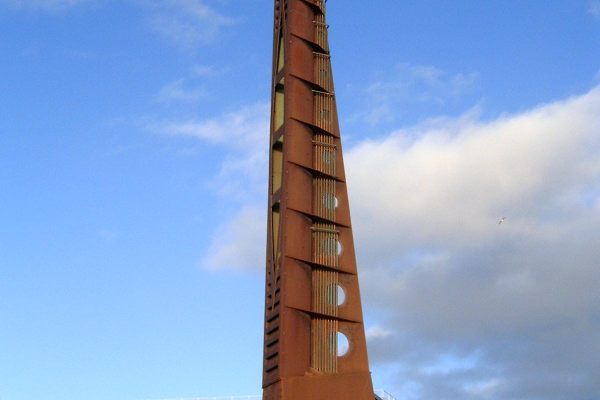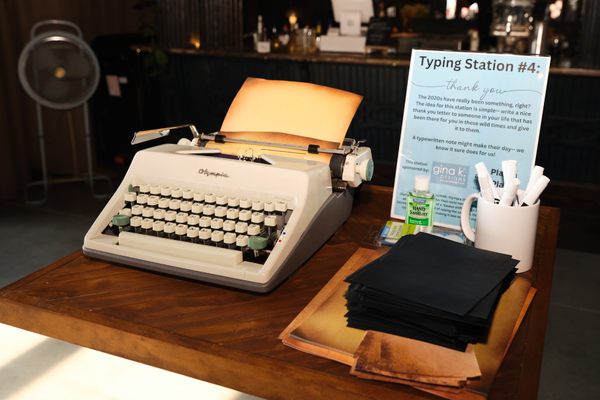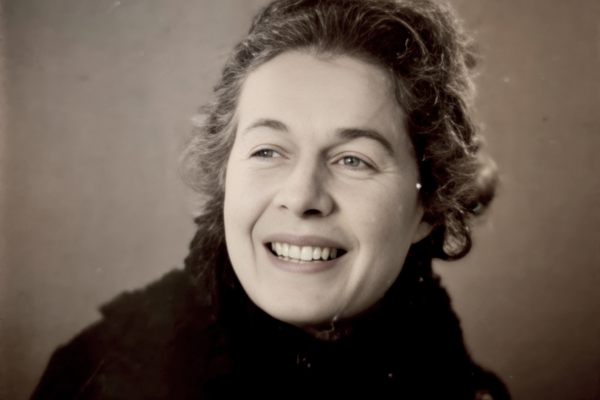How Three Sisters Revolutionized England’s Penny Arcades
The Dennison sisters amassed a small fortune with their morbid “working models.”
A fleet of old arcade machines line the upper landing at Abbey House Museum in Leeds, England. Among them stands a curious 1934 glass-fronted automaton. The diorama within perfectly renders a museum in miniature. Tiny artifacts pack display cases. To one side, a pocket-sized crimson sarcophagus is covered in intricate hieroglyphs. Yet, that’s not what draws the eye: Slumped in a chair, a small corpse stares blankly out from the scene.
A sign atop the machine’s mahogany case proclaims its name: “Murder in the Museum.” Drop an old British penny into the slot, and the scaled-down world springs to life.
A detective eyes a crew of onlookers. A couple whispers together. A woman rifles in her large handbag. Suddenly, the door of the sarcophagus swings open, and the murderer emerges, pistol raised. A single shot fires. The detective—his gun concealed behind his hat all along—is quicker than the killer. The villain, fatally wounded, falls back into the Egyptian tomb. The coffin door slams shut. Then, as quickly as it started, the whirring stops: The case is solved.
“Thirty-five seconds of joy,” pronounces Kitty Ross, curator at the museum. Before being auctioned off in the mid-1960s and finding its way to Abbey House, Murder in the Museum was one of around 50 arcade machines, known as “working models,” occupying the upper floors of Blackpool Tower, an Eiffel Tower look-alike first opened in 1894 that still welcomes visitors to the seaside town of Blackpool.
These machines were once wildly popular, but the three trailblazing sisters who handcrafted each one have been almost entirely forgotten. Their work was unparalleled. Now a handful of dedicated collectors are helping rescue and restore the surviving machines to enthrall a new generation.

Providing affordable thrills was crucial for making it in Blackpool. In 1801, this sleepy town on England’s northwest coast had a population of 500. By the end of the century, millions of tourists, largely from nearby mill towns, were visiting each season. “Blackpool was the first British resort to really take off with huge numbers,” says Allan Brodie, visiting fellow at Bournemouth University and author of Blackpool’s Seaside Heritage.
Brodie explains the town was always looking for ways to retain its popularity by cherry-picking innovations from elsewhere. Blackpool drew inspiration from Chicago’s Ferris Wheel, Coney Island’s rides, Berlin’s trams, and, most notably, by constructing its 518-foot version of the Eiffel Tower. Building the Tower was “audacious and a bit crazy,” says Brodie. “Blackpool is always looking for the next big thing to separate the holidaymaker from their pennies.”
Amid this whirl of innovation, John Dennison, a fitter and finisher at a Leeds-based engineering firm, found an appetite for his eccentric new arcade machines. Dennison had started creating jerky automatic models as a hobby in his 20s. By the 1870s, his coin-operated clockwork models of ships and agricultural machinery drew crowds at exhibitions across the country.
In 1891, Dennison, now the father of a growing family, started stocking the small arcade at Dr. Cocker’s Aquarium, Aviary, and Menagerie on Blackpool’s seafront. A few years later, the decision was made to replace Dr. Cocker’s with a three-story redbrick entertainment complex topped by the soaring ironwork Blackpool Tower. Dennison retained his contract, becoming the tower’s supplier of penny-operated working models and fortune tellers, including morbid novelties named “Execution No.19” and “The Dying Child.” Some of the moving dioramas had been made in France, with Dennison placing them within a penny-operated casing to make a profit. Others he built by hand. Although he didn’t invent coin-operated arcade machines, Dennison’s business acumen meant he became the first recorded person in the world to make a living from them.
For around $2.5o in today’s money, Tower patrons could not only visit Dennison’s penny arcade but also tour the complex’s grand saloon, roof gardens, aquarium, monkey house, aviary, menagerie housing big cats, bear cage, and seal pond. For a little extra, they could perch agog the 3,000-seat circus or ascend the Tower itself. “Although it’s affordable, it’s got a very high-quality finish inside,” says Brodie. “You’ve got real opulence for a mere six pennies.”

Following Dennison’s death in 1924 at age 77, his daughters, Florence, Alice, and Eveline, were determined to keep the business going. Although the sisters lacked their father’s engineering background, they understood the importance of sating the thirst for novelty amid the Tower’s many attractions. So they started developing their father’s model collection from their suburban home in Leeds.
The three of them made an impressive team. Florence, at age 36, took over the business side of things. Alice, then 34, who had previously worked as a governess and dressmaker, turned her hand to the machine themselves, mastering their fiddly mechanics, as well as stitching costumes that didn’t constrict the figures’ movements. At 28, Eveline became responsible for creating the scenery and props. With art school training, and often Alice as her model, she handcrafted characters from wood and clay, often using pins and manicure tools.
They began by renovating some of their father’s models to include more movement and exciting plots and reveals. By 1929, they made their first model from scratch: “The Haunted Grange,” where a miniature manor house becomes the setting of a supernatural killing. Then, in 1930, while making their next machine the “Spook House”—complete with a levitating telephone and resident pint-sized ghost—the sisters made the change from clockwork to electricity. This switch removed the need for a staff member to wind the machines, maximizing profits. Each of the sisters’ machines took between three to six months to complete.
Eveline also wrote and illustrated the messages for their fortunetelling machines. In 1935, The Mirror Newspaper ran “Fate of Thousands in Hands of Three Sisters.” The piece outlined how the trio had already prophesized 50,000 fortunes and designed portraits of 25,000 sweethearts.
Yet it was the ghoulish models that most captivated the hoards of early 20th-century holidaymakers. “The most popular models we created were always those with a morbid flavour—‘Super with Death’ [where a luxurious country estate dinner turns deadly], ‘Midnight in the Haunted Graveyard’ [where ghosts surprise mourners], and ‘Murder in the Museum,’” the sisters later noted in a 1963 newspaper article. “Anyone who imagines that children prefer fairy stories are way off beam.”

Brodie estimates that around three to four million people a year were visiting the Tower by the 1930s. “If even a tenth of them used the machines, that’s an awful lot of income,” he says.
The Abbey House Museum’s curator Kitty Ross knows precisely how well the sisters did. Florence, the last surviving of the three, donated a notebook documenting all their designs, newspaper clippings, and earnings to Abbey House Museum shortly before she died in 1976. The notebook shows that when they took over the business in 1924, the sisters had annual takings of £1,586 (roughly $83,500 today). By the time they had crafted Murder in the Museum a decade later, this had risen to £2,624 (approximately $170,500 today). In 1943, as wartime Blackpool attracted soldiers on leave, civil servants from London, and evacuated women and children, they made £6,831 (around $311,500 today).
With more women now able to vote and increasingly working outside the home following World War I, Ross explains that the sisters’ pioneering attitude was in keeping with the mood of the time. All the same, as unmarried, self-taught, successful entrepreneurs, they were trailblazers.
In a 1935 article, entitled “Girls Provide The Brains,” the Reynolds Newspaper reported that “like poets and artists, the girls are always on the lookout for new ideas” for their dark miniature tales. They found them everywhere—in plays, historic ruins, and true crime cases. For Murder in the Museum, their inspiration came from the title of an American B-movie released earlier that year.
“It’s incredible the ingenuity and attention to detail,” says Robert Hind-Smith, a collector, restorer, and museum conservator of working models, who also runs a traditional penny arcade at Woodbank Garden Centre in Yorkshire, England. Hind-Smith revived Murder in the Museum when its motor ground to a halt after 80 years of action. He describes the sisters’ machines as the “Rolls Royce” of the genre compared to the cruder copies that sprang up in seaside amusements across the country. Yet, he also notes that: “A lot of the electrics in them are quite lethal.”

“[Murder in the Museum] is quite a complex machine,” says Hind-Smith, referring to its system of irregular rotating cylinders, called cams, and undulating levers. “When a lever goes over a bump, it pulls them in and out to make the movements,” he explains. And, as in the best crime dramas, it’s all about the timing. A cam with a steel spring makes the click of the gun; Simultaneously, a switch flashes a hidden lightbulb on and off to recreate the powder flash; Next, a lever drops the fatally wounded man’s head forward, only to quickly push it up again to stop it rubbing on the closing sarcophagus. “There is an important sequence—or else something happens before it should,” Hind-Smith says.
What makes the machines more remarkable is that their intricate mechanisms were all handmade. “You couldn’t buy them off the shelf,” says Hind-Smith. “The Dennison sisters were so talented in their artwork, dressing of the scenes, and engineering.”
In 1944, following their most profitable years, the sisters decided to sell the whole collection to the Tower for an undisclosed sum and live out their years in leisure. The machines retained their huge popularity over the next two decades. Yet the women behind them were soon forgotten.
On July 11, 1963, the Blackpool Gazette, on the request of the Blackpool Tower Company, published “The Mystery of the Penny Shows,” asking anyone with information about the origins of the well-loved machines to come forward. In the end, the reply came from the sisters themselves, now in their 60s and 70s. “During the 20 years we held the business, we learned a lot about human nature,” the sisters told the Gazette.
Even today, the limited literature about working models often mentions the Dennison sisters as a footnote, choosing instead to focus on their father’s more basic models. However, collectors understand their worth. Whenever one of the sisters’ “lost” machines reappears on the market, it is often subject to fierce bidding wars.
Ross confirms Murder in the Museum remains one of Abbey House’s most popular attractions, with children and adults alike still getting a delicious shiver from watching the jolting little half-lit drama. No doubt the sisters would be delighted to know that, 90 years on, their machine can still entice visitors to part with their pennies.











Follow us on Twitter to get the latest on the world's hidden wonders.
Like us on Facebook to get the latest on the world's hidden wonders.
Follow us on Twitter Like us on Facebook